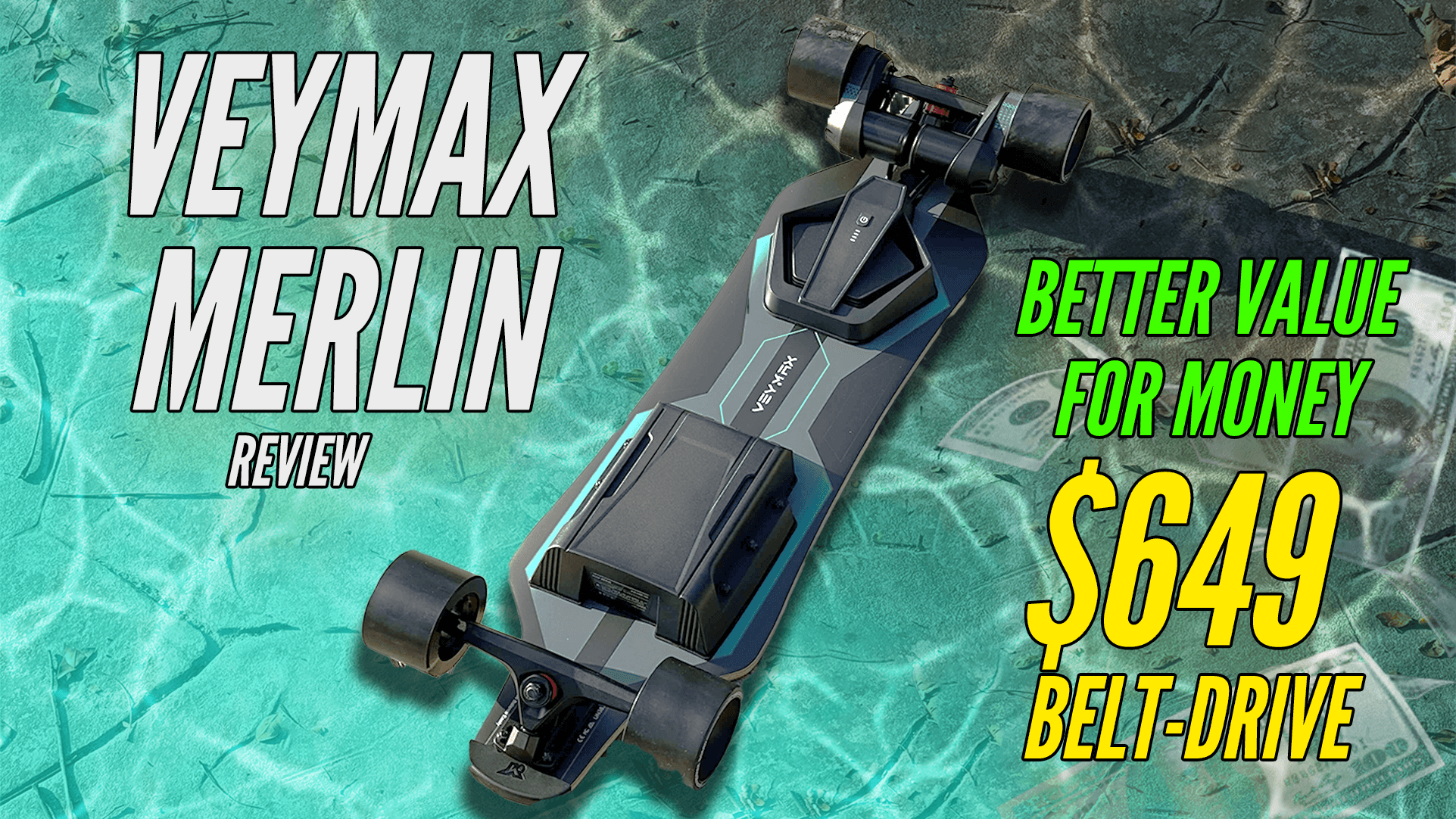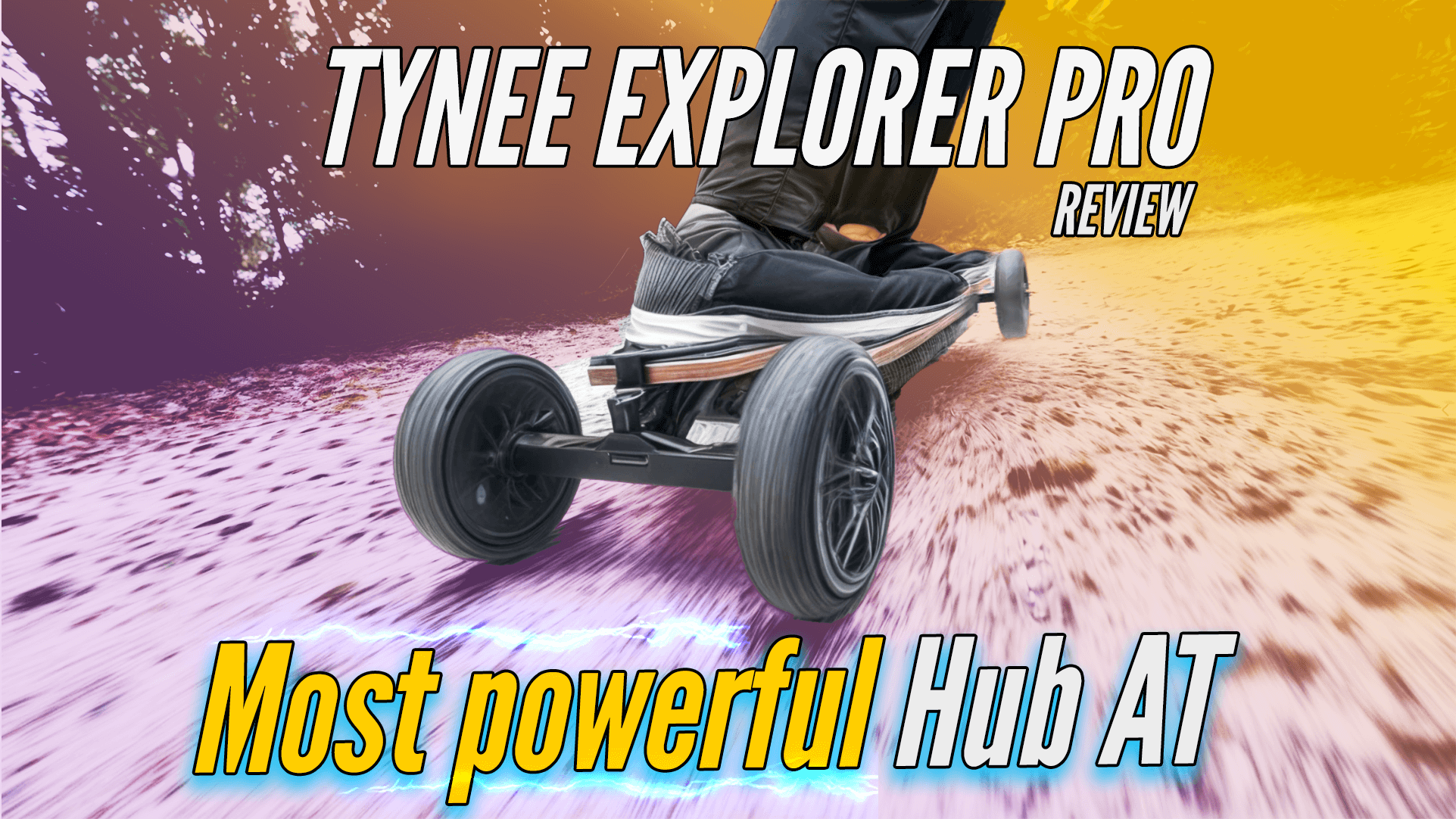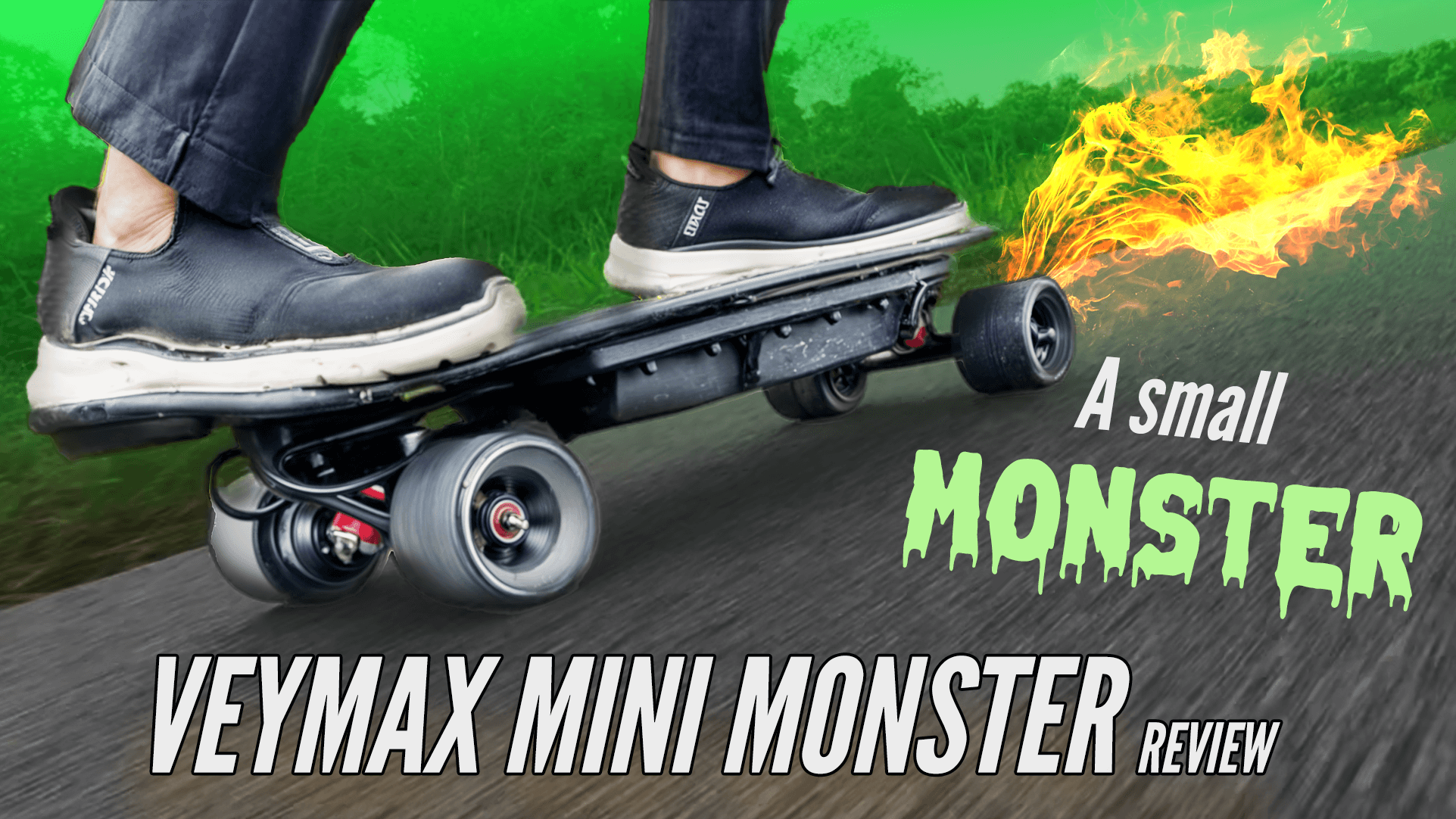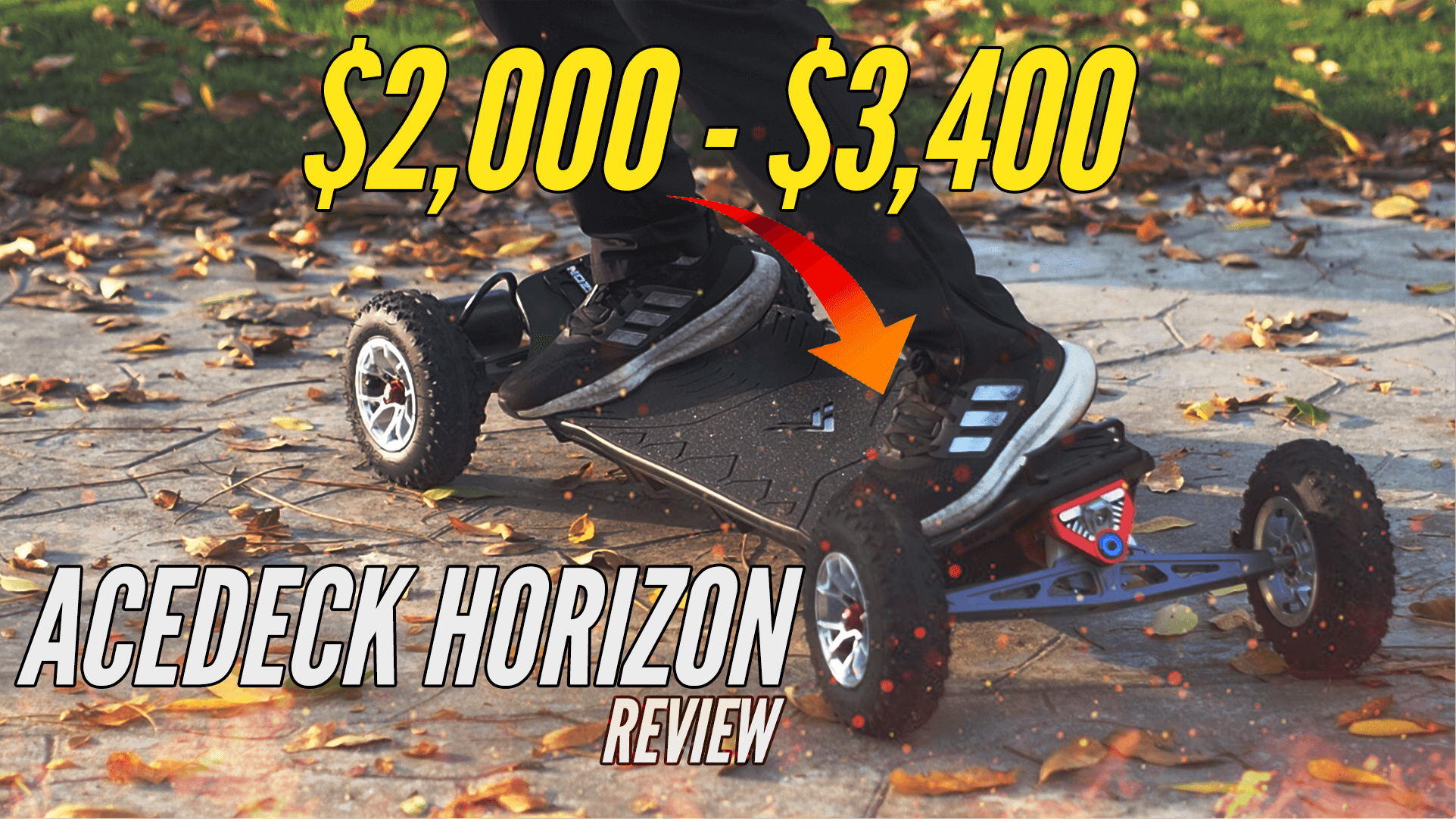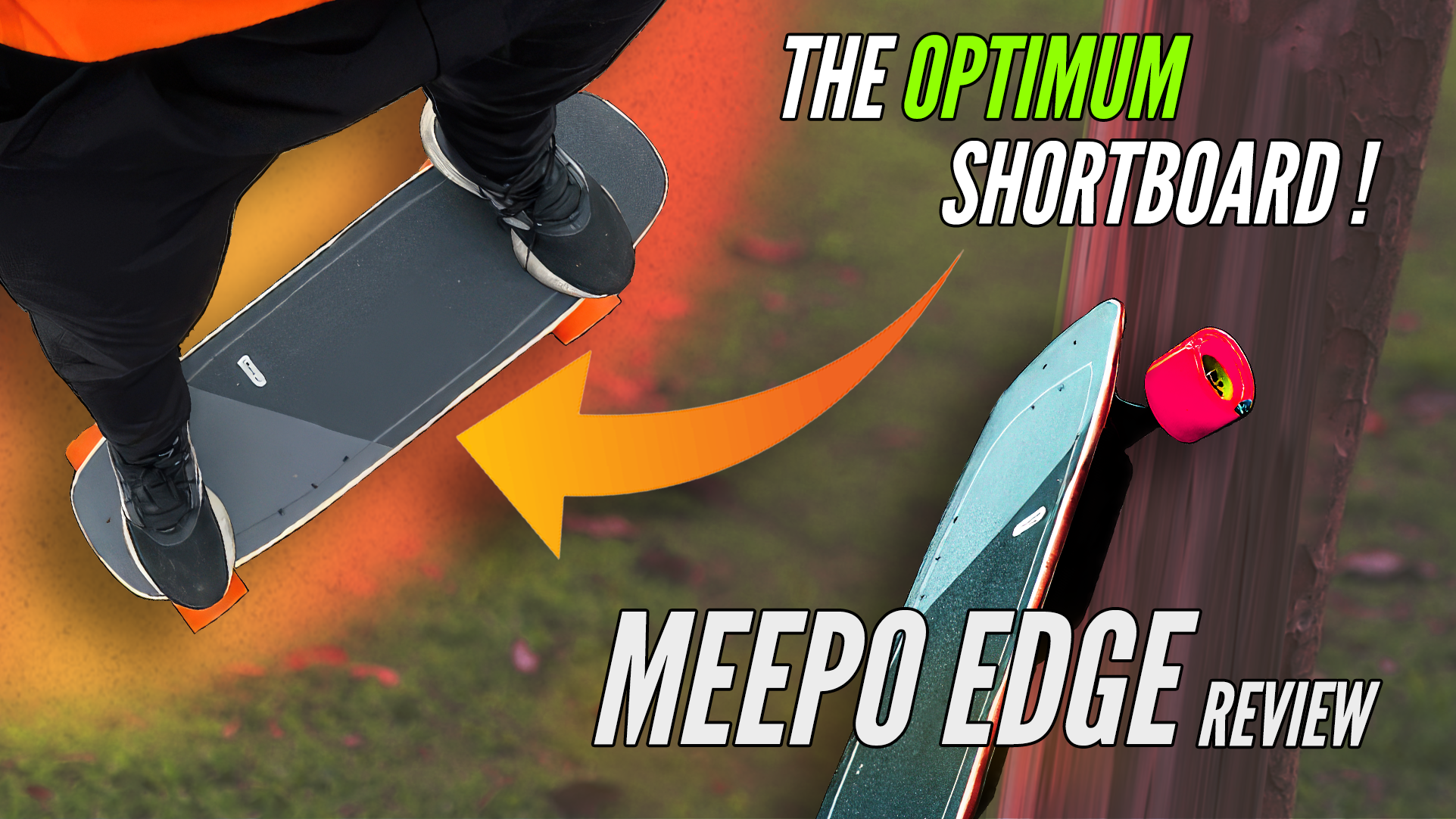Today, we’re taking a look at the Veymax Merlin, a $649 belt-driven electric skateboard from the emerging brand Veymax.
The mid-tier market, that being of boards priced between $500-$800, is pretty crowded, and already features popular boards like the Meepo Flow, Wowgo Pioneer X4 and Tynee Ultra. So, the Merlin has its work cut out if it wants to stand out from the crowd.
Check out our review of the Wowgo Pioneer X4.
But first, let’s dive into the specs.
Veymax Merlin Specs:


| Price | $649 |
| Battery | 12S2P Samsung 21700 50S, 432Wh |
| Controller | LY-FOC 8.0 |
| Top Speed | 30 mph (48 km/h) |
| Range | 29 miles (46 km) |
| Deck | 2-ply Canadian maple, 2-ply fiberglass, 2-ply bamboo |
| Motor | Dual 1400W belt-driven motors |
Deck – 2-ply Canadian maple, 2-ply fiberglass, 2-ply bamboo


Starting with the deck, Merlin’s deck is made with 2-ply Canadian maple, 2-ply fiberglass, and 2-ply bamboo and measures 37.8” long and 9.8” wide. Its flexibility is moderate — not quite as flexible as the Meepo Envy or Pioneer X4, but comparable to the Meepo Voyager. The deck provides decent comfort and enough concave to keep your feet secure.
Battery – 12S2P Samsung 21700 50S, 432Wh


Beneath the deck is a 432Wh battery in a 12S2P configuration. But what stands out here is the battery cells, in which Veymax has opted for top-tier Samsung 21700 50S cells. These cells are highly rated for their high capacity, strong continuous discharge, and minimal voltage sag, making them popular among premium boards. Besides, it’s pretty rare to see Samsung 50s in a $600 board.
This setup claims a range of up to 29 miles (46 km) per charge, which is quite a bit higher than its direct competitors.
ESC and Remote – LY-FOC 8.0 with Standard LingYi remote:


In the other enclosure, you’ll find the Merlin sports a LingYi-FOC 8.0 ESC. This choice surprised us, as Veymax previously used Hobbywing ESCs in their Mini Monster. Brands that typically select LingYi ESCs are often going for a punchier, more aggressive ride feel, sometimes at the cost of smoothness and precise throttle control found in Hobbywing ESCs.
Another trade-off here is the lack of smart turn-on; however, the LingYi ESC in Merlin features push-to-start functionality in which you simply roll the board forward to power it on. The Merlin ships with a standard LingYi remote, which isn’t particularly exciting, but it has always worked reliably.
Motor – Dual 1400W Belt Driven Motors:


The Merlin is powered by dual 1400W belt-driven motors. 1400W stands pretty average among the competition, delivering a top speed of 30 mph (48 km/h), which is also a pretty average number. These motors do bark louder than most belt motors, though.
And they’re not just loud for the sake of it. The combination of LingYi ESC and the 1400W motors gives very strong acceleration from a standstill. You really have to press your foot down firmly if you want to go full throttle in the highest speed mode.
Another thing we appreciate about the Merlin is that it keeps that strong acceleration even at 20 mph. You can continue to accelerate all the way up to top speed without feeling a power drop-off. It’s a satisfying feeling—being able to summon more power with a flick of the throttle, even when you’re already moving fast.
Another plus with this ESC and motor setup is the braking behavior. LingYi ESCs usually give stronger brakes, and that’s the case here. Where Hobbywing ESCs tend to feel weaker toward the end of braking—just before coming to a stop — the Merlin with its LingYi ESC is fully capable of stopping and locking the motors.
Most seasoned riders prefer this kind of braking response, though of course, it’s a matter of personal preference.
Trucks – 8” 45 degree Reverse Kingpin Trucks:


Veymax has equipped the Merlin with 8-inch, 45-degree reverse kingpin trucks which isn’t particularly special. They’re solid, stable at speed, and still responsive enough to make carving fun. Overall, they seem designed for high-speed riding, thanks to their stability.
Wheels – 90mm 78A Polyurethane Wheels or 105mm Cozy Wheels:


The Merlin comes standard with 90mm 78A polyurethane wheels, with an option to upgrade to 105mm Cozy Wheels for just $30 more. Personally, I would’ve gone for the 105mm setup, especially since we have pretty rough roads where we are.
The Merlin clearly has enough torque to drive bigger wheels anyway. Veymax ships the 90mm setup with a 36T pulley, giving a 2.4:1 gear ratio, and ships the 105mm setup with a 40T pulley to maintain strong torque with a 2.6:1 gear ratio.
That said, the 90mm wheels on our review unit were fine too. In fact, they feel slightly softer than most 90mm wheels, so riding them on rough pavement is still manageable.
Veymax Merlin Specs Summary & Verdict:


Honestly, the $500–$700 price segment is pretty uninteresting for a reviewer like us. Unlike the sub-$500 category, where it’s all about making trade-offs to hit a low price, or the premium category, where we get wowed by over-the-top features, most boards in this range are just plain, well-rounded electric skateboards. And the Merlin fits that description.
What Veymax Merlin does offer, though, is a slightly better battery, stronger torque, and more power than its competitors—boards like the Tynee Ultra Belt, Meepo Flow, and Wowgo Pioneer X4. Veymax is probably hoping that edge is enough to sway buyers toward the Merlin.
In that sense, we usually approach newer e-skate brands with some skepticism, but this isn’t the first Veymax board we’ve reviewed—we also tried the Mini Monster—and both times, the results have been solid. That gives us a bit more confidence that Veymax can keep up with the competition and is likely here to stay.
All in all, if you’re looking for a Boosted-style electric skateboard with solid power, the Veymax Merlin is a board we can recommend. It’s one of the good ones—no complaints here.
If you are interested in buying the Veymax, be sure to check out our affiliate discount link here and use code: “ESKATEHQ” to receive 5% off during checkout.
It will help you get a small monetary discount and help us out too. On top of that, you’ll be tagged as an Electric Skateboard HQ customer and probably be treated better. Cheers!




